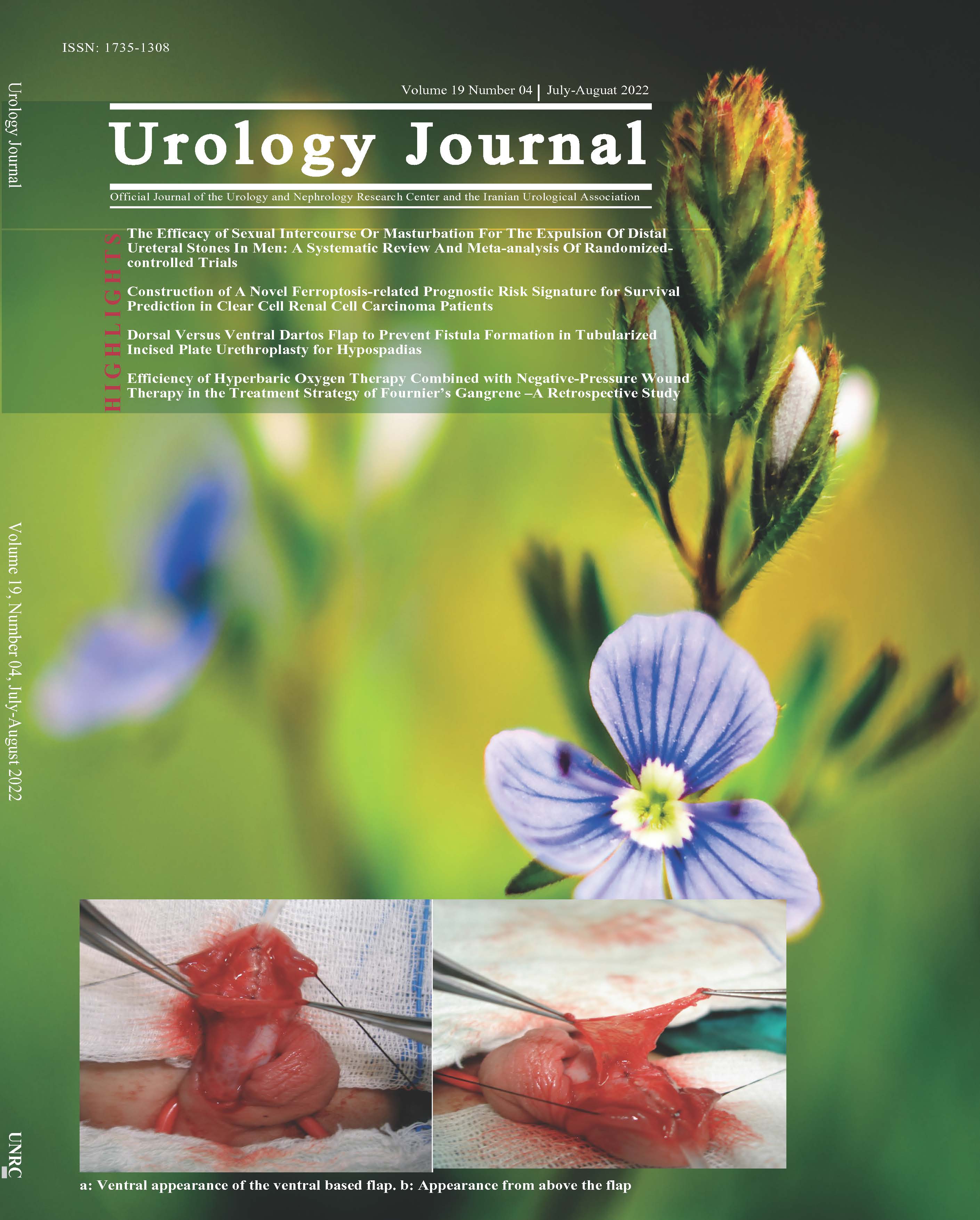The Efficacy and Safety of Single-Incision Mini-Slings for Stress Urinary Incontinence: A Network Meta-Analysis
Urology Journal,
Vol. 20 No. 04 (2023),
2 October 2023,
Page 191-202
https://doi.org/10.22037/uj.v20i.7218
Purpose: To evaluate the efficacy and safety of single-incision mini-sling for stress urinary incontinence based on network Meta-analysis.
Materials and Methods: We searched PubMed, Embase, and Cochrane libraries from August 2008 to August 2019. Randomized controlled trials comparing two or more indicators of Miniarc (Single Incision Mini-slings), Ajust (Adjustable Single-Incision Sling), C-NDL (Contasure-Needleless), TFS (Tissue Fixation System), Ophria (Transobturator Vaginal Tap), TVT-O (Transobturator Vaginal Tape), and TOT (Trans-obturatortape) in treating female stress urinary incontinence were collected.
Results: Totally, 3,428 patients from 21 studies were included. Ajust had the highest subjective cure rate (Rank=0.52), while Ophira had the worst (Rank=0.67). TFS had the highest objective cure rate, and the worst was found in Ophira. TFS required the shortest operating time (Rank=0.40), while TVT-O required the longest operating time (Rank=0.47). Miniarc had the least bleeding (Rank=0.47), while TVT-O had the most bleeding (Rank=0.37). C-NDL had the shortest postoperative hospital stay (Rank=0.77), while Ajust had the longest postoperative hospital stay (Rank=0.36). For postoperative complications, TFS performed best in groin pain (Rank=0.84), urinary retention (Rank=0.78), and repeat surgery (Rank=0.45). TVT-O performed worst in groin pain (Rank=0.36), and urinary retention (Rank=0.58). Miniarc had the highest repeat surgery rate (Rank=0.35). Ajust had the lowest probability of tap erosion (Rank=0.30), while Ophira had the highest tap erosion level (Rank=0.45). Miniarc showed the greatest advantage in urinary tract infections (Rank=0.84) and de novo urgency (Rank=0.60), while C-NDL had the highest incidence of urethral infections (Rank=0.51). Ophira performed worst in de novo urgency (Rank=0.60). C-NDL performed the best in sexual intercourse pain (Rank=0.79) while Ajust was the worst (Rank=0.49).
Conclusions: In view of comprehensive efficacy and safety, we recommend that TFS or Ajust should be selected first for single-incision sling and the application of Ophria should be minimized.
